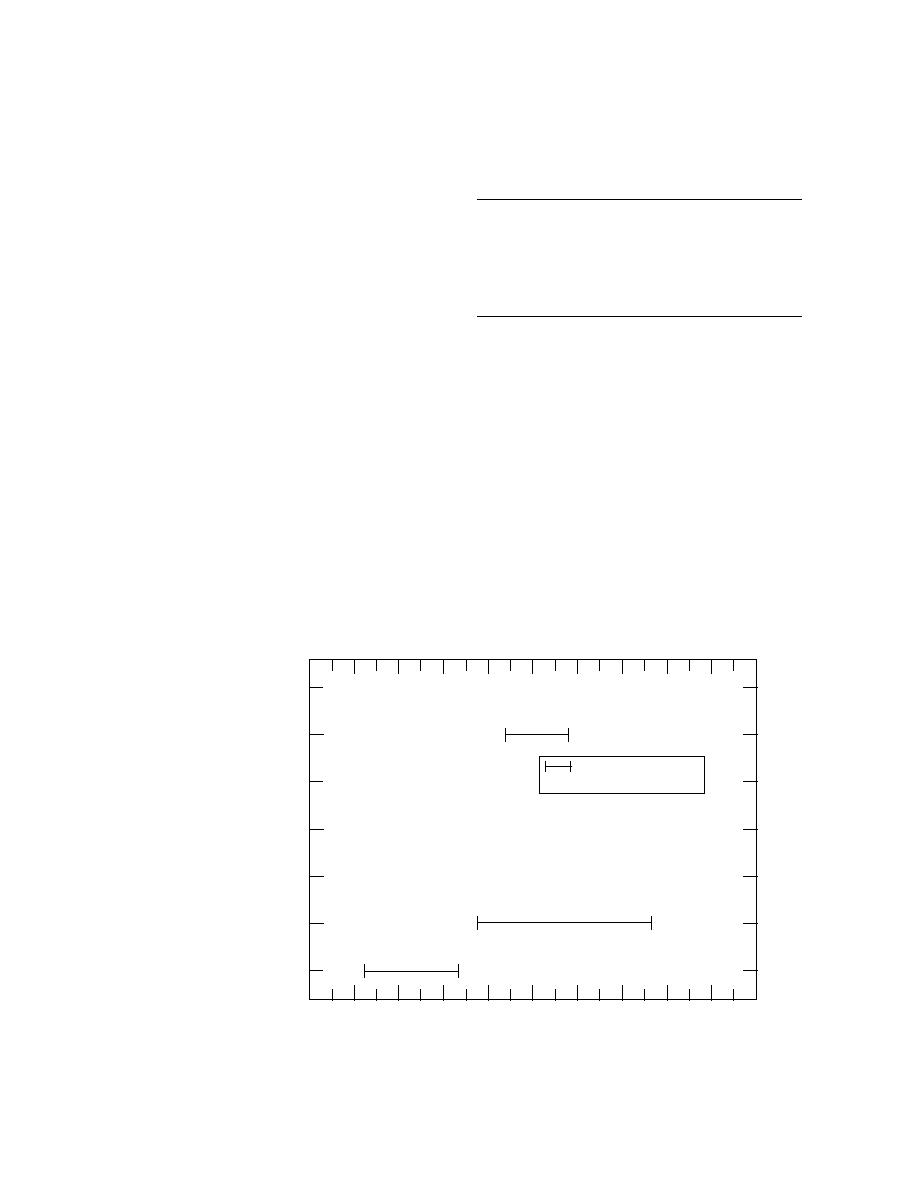
higher φ. Based on laboratory shear box tests on
Table 3. Reported values of the angle of internal
ice rubble, Prodanovic (1979) reports φ = 53 for
friction (φ) for freshwater ice.
thicker ice and φ = 47 for thinner ice. Shear box
tests by Hellman (1984), cited in Ettema and Urroz-
Range
Mean
of φ
Aguirre (1991), reportedly resulted in φ = 54.
value
Reference
Ettema and Urroz-Aguirre (1991) report that freeze
53
Prodanovic (1979) (thicker ice)
bonding can affect the shear and compressive
47
Prodanovic (1979) (thinner ice)
54
strengths of ice, and suggest that the relatively high
Hellman (1984)*
values of φ often reported are actually an effective
21
Michel (1980)
1134
Weiss et al. (1981)
friction angle reflecting these and other effects.
4458
Lset and Sayed (1993)
Lset and Sayed (1993) conducted shear tests in a
3876
Timco and Cornett (1999)
biaxial compression chamber and noted that sub-
merged freshwater ice rubble froze, resulting in
*Cited in Ettema and Urroz-Aguirre (1991).
larger pieces and higher angles of internal friction
than for dry rubble. They tested different size dis-
Reported values of φ are summarized in Table 3
tributions of 25-mm and 100-mm ice blocks, and
found that uniform size distributions produced
and Figure 10.
higher stresses than a mixture of half large and
The angle of internal friction and the passive
half small blocks. Timco and Cornett (1999) con-
pressure coefficient are related as shown in eq 23
ducted shear testing of broken saline and fresh-
(Fig. 11). Some researchers report Kp rather than
φ. Beltaos (1988) has calculated values of Kp = 8
water ice rubble using a biaxial compression cham-
ber. They found that friction angle decreases with
and 10 for a refrozen breakup jam on the Thames
increasing strain ratio until some limiting friction
River, New Brunswick, with Kp = 9.6 providing
angle is reached. For freshwater ice, this ranged
the best model results using RIVJAM. Beltaos and
from about 76 at low strain ratio (≈1.2) to about
Burrell (1991), Beltaos (1993), and Beltaos et al.
38 at a high strain ratio (3.5). They hypothesized
(1996) used Kp = 10, 12, 12, and 12 when using
that fracturing of the rubble at the higher strain
RIVJAM to model four other breakup jams. For
ratios could explain the change in friction angle.
the 1992 and 1996 Credit River (Ontario) breakup
Hellman (1979)
X
Lφset and Sayed (1993)
= Range
X
Michel (1980)
= Only Value Reported
X
Prodanovic (1979)
X
(Thinner Ice)
Prodanovic (1979)
X
(Thicker Ice)
Timco and Cornett (1999)
Weiss et al. (1981)
0
10
20
30
40
50
60
70
80
Angle of Internal Friction (φ)
15



 Previous Page
Previous Page
